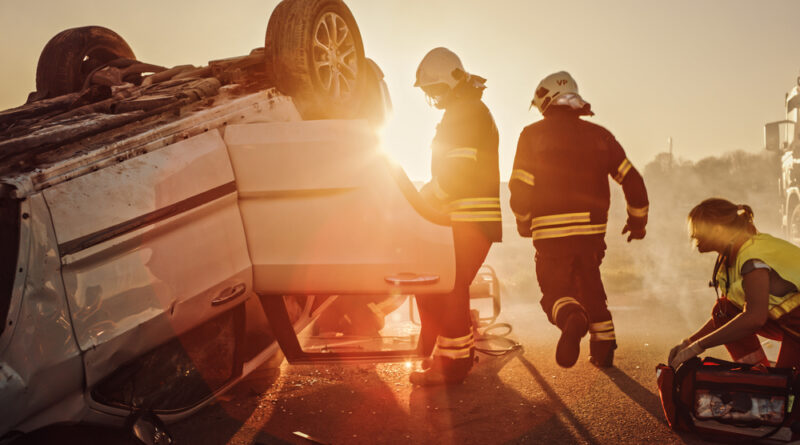5 First Aid Tips You Should Know in a Road Accident Emergency
Road accidents are one of the major causes of death. Every year, thousands of people in Australia die or acquire injuries due to road traffic accidents.
Based on our latest national road toll data as of November 2020, there were 1,132 recorded road deaths. This is a decrease of a total of 3.7% from the 12-month period of November 2019.
At present, the annual death rate stands at 4.4 per 100,000 population.
Lack of proper roads, drunken and negligent driving are some of the major causes of high numbers of deaths and accidents. However, a large portion is due to a lack of proper medical attention and first aid is not applied on time.
Road accidents occur fast and unexpectedly and most of them happen away from our home. During this time, we may find ourselves in a helpless situation. Without knowing what to do, we have to waste valuable minutes waiting for help and assistance to arrive.
Many lives could have been saved if immediate first aid was administered in the first few minutes of the accident. First aid intervention increases the victim’s chances of survival and prevents the occurrence of lifelong disabilities. These three reasons are enough to underline the importance of basic road safety awareness and knowledge of first aid.
These life-saving steps from First Aid Pro, a provider of first aid course in Melbourne have listed what everyone should know in case of a road accident emergency.
Arriving at the accident scene
The first thing to do when you come across a road accident is to assess whether the scene is safe to enter and accessible before attempting to render first aid. Taking a few seconds to quickly check the scene and assess the situation is suggested before calling 000.
Doing these will be a big help in providing information to the emergency dispatcher.
- Establish how many vehicles are in the accident
- The number of occupants per vehicle
The last thing we need is for you to be added to the list of casualties. Scene assessment will ensure that you are in a safe situation before helping.
Check for Injuries
Check yourself first for any injuries if you are at the accident scene. If you are conscious, try to assess the current situation and check if you can move your arms and limbs. See if you are experiencing dizziness or other mild symptoms. Self-assessment will let you decide whether you are fit enough to help others and not further cause your injuries.
Once self-assessment is complete and you are fit enough to help, check for the other victims. Do a headcount and see the extent of their injuries. When deciding who to prioritize to help, use the primary survey in first aid.
The Primary Survey is the initial process you do when you come across a casualty. It is the quickest way to find out how to treat any life-threatening conditions in order of priority.
A primary survey will help you not to forget the necessary steps and prevent you and the casualty from getting hurt. The Primary follows the DRSABCD action plan: Danger, Response, Airway, Breathing, and Circulation.
Call Ambulance Services
Call Triple Zero 000 for an ambulance. If you are unable to make calls, ask the bystanders to do it for you.
Immediately call for an ambulance or emergency medical services (EMS) to inform them about the incident. Provide the dispatcher any information request to the best of your knowledge.
-
Who?
The emergency dispatcher will usually ask for the following:
- Your name and the name of the casualties (if available)
- The age of the casualties
- Your phone number in case authorities will need to get more information from you later on
-
What?
You will need to provide the information you know about the emergency. For example, what are the vehicles on the scene, are the casualties not breathing, etc.
-
Where?
Let them know where exactly the emergency took place. If the information is available, give them the road name, city, mile markings, and traffic signs.. Provide any information you can think of that will help first responders know how and where to find you.
Do exactly what the emergency dispatcher asks you to do. While waiting for the EMS, they will guide you on the next steps or if there is the need to perform CPR and/or rush the victims to the nearest medical facility.
Providing Aid to the Victims
-
Check the airway
We all know that breathing is an absolute necessity in a person’s life. In a road traffic accident, it is vital to check the victim’s airway to ensure that the person is breathing properly.
If the casualty has stopped breathing, check his/her mouth for any obstruction. Use your index and middle finger to remove the obstruction and to clear the airway.
-
Perform life-saving techniques
Start with checking the person’s chest to see it is rising and falling. If there is no pulse and shows no signs of breathing, perform CPR immediately. CPR will help restart the circulatory and respiratory systems allowing the casualty to retrieve normal breathing.
When performing CPR…
- Make sure that the person is lying his back on a firm surface before positioning your interlocked fingers on top of their chest.
- Press down on the chest for about two inches to give chest compressions. Repeat and give at least 30 compressions at the rate of 100 compressions per minute. To make it easy, push it to the beat of the Bee Gees song “Stayin’ Alive.”
- Gently tilt the back of the person’s head and lift the chin to open the airway. Proceed with giving rescue breaths until you can see the chest rise.
- Place the victim’s body in the recovery position (on their side) to protect their airway. Support their neck to prevent further injury while waiting for the emergency services to arrive.
-
Treat bleeding wounds
Most road accident injuries involve bleeding. To stop the bleeding in an open wound, apply continuous pressure using a cloth or soft pad in the wound area. Press down using your palms and once the bleeding has stopped, you can proceed with applying treatment to the injury.
-
Dealing with Spinal Injuries (Always suspect spinal injuries)
An Austin truck accident lawyer says: Neck and spinal injuries are very common in a road accident. Notice if the person’s neck is not in its normal position. If it isn’t, it is best not to move the victim unless they are in immediate danger (road traffic). Rough handling or moving the casualty with suspected neck and spinal injuries can cause more harm and may even cause death.
-
Keep the victim warm
Research proves that the core and skin temperature can dramatically fall when the injury was severe. Hence, the reason why the victims feel excessive cold after the accident is due to shock.
Keeping them warm right after the incident is crucial for their survival. Use a jacket, a blanket, a pullover, or whatever available in the scene.
Some of us will witness an accident or medical emergency at some point in our lives that requires our assistance. To prevent the incidence of fatal road accidents, we need to know how to deal with road traffic accidents.
Knowing what to do, when, and who should you call during a road accident can potentially save lives.


With the material presented with many difficult to disagree, from souls continue in the same vein.